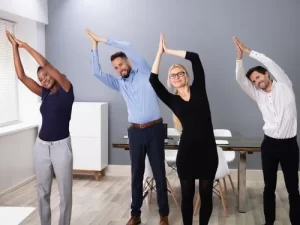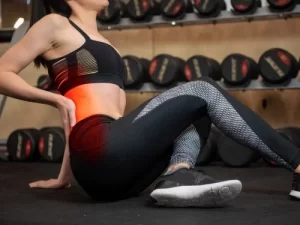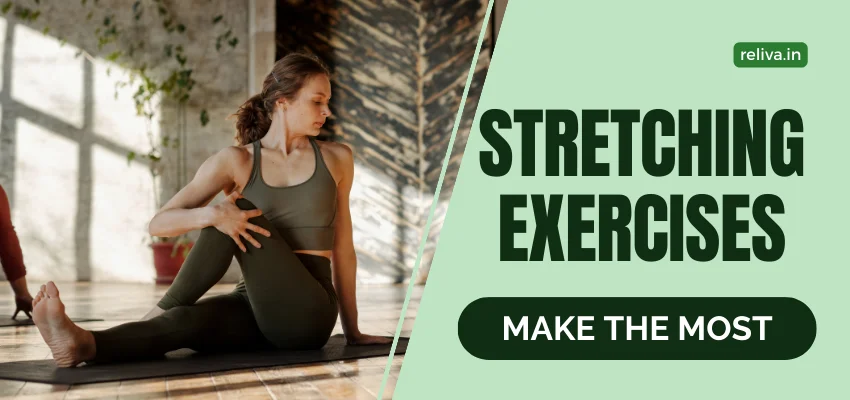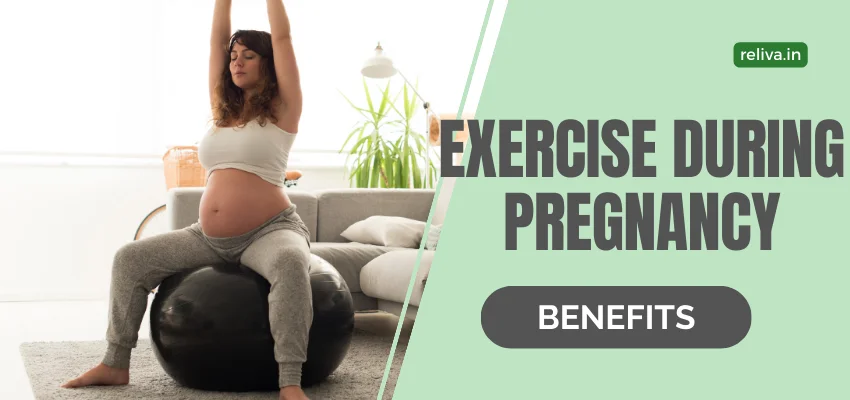Overview I Benefits I Types of stretches I Tips to stretch properly I Stretching FAQs
Stretching exercises for for sport improves flexibility, which increases the ability of a joint to move through its full range of motion; in other words, how far it can bend, twist and reach. This article attempts to guide how to stretch properly and get the most of it.
Stretching is a form of physical exercise in which a specific muscle or tendon (or muscle group) is deliberately flexed or stretched in order to improve the muscle’s felt elasticity and achieve comfortable muscle tone. The result is a feeling of increased muscle control, flexibility, and range of motion. Stretching is also used therapeutically to alleviate cramps.
Here are some of the main benefits of stretching. Hopefully these reasons will inspire you to make it part of your schedule!
Stretching For Your Body
- Helps improve flexibility (increases your range of motion)
- Assists in correct posture by lengthening tight muscles that pull areas of the body away from their intended position (because of so much time at our computers, many of us have tight chest muscles which pulls the shoulders and head forward, leaving us with a hunched shoulder look)
- Increases blood and nutrient supply to muscles, thereby possibly reducing muscle soreness
Stretching For Your Mind
- Even a short amount of time (10-15 minutes) of stretching can calm the mind, provide a mental break, and give your body a chance to recharge
- Classes like yoga or pilates offer you a chance to spend an hour releasing tension physically and mentally

Different types of stretches
The benefits of stretching have been multi-fold that several styles of stretching have evolved over the years, each having their own set of advantages. Pick and choose the style that suits your routine.
- Static stretch: This includes stretching a body part to the point of mild discomfort and holding that position to give a good stretch to the muscles of that area, typically for at least 30 seconds or longer.
- PNF or Proprioceptive neuromuscular facilitation: This may be performed in various ways depending upon the practitioner. Howvere what remains common is to focus on contracting and relaxing the muscle while holding the stretch. This may not happen when you just begin to stretch but can be acquired with regular practise.
- Dynamic stretch: This stretch has fast gained popularity with the uprise of Power yoga and dynamic yoga. While the basic movements for stretches remain the same as in static stretch, one needs to gently repeat movements, such as arm swings, where one gradually increases the range of motion of the movement, but always remains within the normal range of motion.
- Ballistic or bouncing stretches: This too is a modification of static stretches. One gets into the basic stretch position and then performs a bouncing or jerky movement holding that position to increase range of motion.
How to do stretching properly?
To stretch properly and safely, slowly stretch the muscle just until you feel resistance. Resistance is the point at which you feel a slight pull. It should not be painful. Stop and hold each stretch for 10 to 20 seconds without bouncing up and down.
During the stretch, breathe deeply and regularly. Don’t hold your breath. Make sure your muscles are warmed up before you stretch. The best time to stretch is after exercise, when your muscles are most supple. ReLiva suggests 6 active stretches that you must do.
To get the most out of the stretching you do, here are some suggestions:
1. Don’t Skip the Pre-Workout Stretch
Your muscles should be warm before you begin your stretching. Do a warm-up before a workout that simulates the movements you’ll be doing in order to warm up and prepare your body. Stretch after the workout when your muscles are already warm.
2. Focus on the Muscles That Need the Most Help
Instead of trying to stretch your whole body after every time you exercise, focus on a key area of the body each time. Spend longer on each stretch and include more stretches for each area. If you are aware of muscles that are tight, then focus on those ones.
3. Include One Long-Duration Flexibility Session Each Week
Choose a flexibility class, such as yoga, pilates, or do your own flexibility work for 45-60 minutes at least once a week. If you’re having trouble sticking to it, follow these strategies and build it into your schedule/calendar.

FAQs about Stretching
Stretching, most often is a part of maintenance routine suggested to our patients once they recover and they are ready for discharge. That is when we hear a lot of questions about stretching from them. Our team attempts to answer the most frequently asked questions.
Q. What happens when we stretch?
Ans: Regular stretching is thought to increase flexibility, both by making muscles more supple and by retraining the nervous system to tolerate stretching further. Like it is for any type of exercises, flexibility attained from regular stretching will gradually disappear once you stop stretching – typically within 3-4 weeks.
Q. How much flexibility do I need?
Ans: It depends on your activity. The flexibility demands of a gymnast or a ballet dancer are clearly different to those of a runner. Someone who is just recovering from an incident of fracture or the treatment of which entails muscular restriction will have almost no flexibility in the affected limb and will have to work hard to regain flexibility to start using the limb properly.
On the other side, there is little to be gained for a jogger or runner from having the flexibility of a gymnast. Too much flexibility may reduce the muscle’s natural spring, which may be detrimental for activities involving running, jumping and sudden changes in direction, such as running, football or football.
Q. Does stretching before exercise affect performance?
Ans: Stretching does increase your range of motion. A ballerina might require stretching before performance to do a full split during the show, even though she is weaker, her performance will be improved.
However, there is much debate on whether stretching makes your muscles weaker and slower (even though you might feel looser) before you engage in a full-fledged sport activity. The counter argument is that it is likely that duration of stretch used in the warm-up routines of most recreational exercisers may be cause negligible reductions in strength.
Q. Does stretching before exercising reduce the risk of injury?
Ans: It is widely believed that stretching does help before exercising. But there are mixed findings specifically if it works to reduce injury
While one set of studies concluded that stretching had little or no beneficial effect on reduction in injury risk; the most recent and largest of the three studies found “a hint” of an effect on reducing injuries like ligament tears, muscle tears, strains and sprains.
Q. How is stretching related to injuries – when do injuries occur?
Ans: It is important to understand that muscle injuries happen when the muscle is put under too much stress, typically when it is stretched under pressure – for instance, when lowering a heavy weight. (Picking and lowering an unusually heavy weight is the most common cause of back and muscle injuries)
The injury occurs not because the muscle isn’t flexible enough, but because the muscle isn’t producing enough force to support itself. A muscle might not produce enough force, either because it is not strong enough or it didn’t contract at the right time for a particular movement ( which usually could be related to the right posture for doing that movement).
Q. Does stretching reduce soreness?
Ans: While you may find relief in dealing with soreness by stretching, there is no medical evidence that stretching does help to reduce or prevent a type of pain that can show up a day or two after exercising – also called delayed onset muscle soreness (DOMS).
Q. Should I stretch before exercising?
Ans: Your decision to stretch or not to stretch should be based on what you want to achieve. “If your objective is to increase your range of motion so that you can more easily do the splits, and this is more beneficial than the small loss in force, then you should stretch,” says Dr Shreya.
Q. How should I warm up before exercise?
Ans: The purpose of warming up is to prepare mentally and physically for your chosen activity. A typical warm up will take at least 10 minutes and involve light aerobic movements and some dynamic stretching that mimics the movements of the activity you’re about to perform.
Gradually increasing the range of motion of these movements during the warm up will prepare the body for more intense versions of those movements during the sport itself. This process will raise your heart rate and increase the blood flow to your muscles, thereby warming them up.
Warm muscles are less stiff and work more efficiently. Increased blood flow enables more oxygen to reach the muscles and produce energy. The warm up also activates the nerve signals to your muscles, which results in faster reaction times.
Q. Should I stretch after exercising?
Ans: There is some evidence that regular static stretching outside periods of exercise may increase power and speed, and reduce injury. The best time to stretch is when the muscles are warm and pliable. This could be during a yoga or pilates class, or just after exercising.
A post-exercise stretch will also slow down your breathing and heart rate, and bring the mind and body back to a resting state.
Now that you know all about stretching, we urge you to go on, try to build stretching into your daily routine and you are sure to see results. Stretching by itself may be a decent beginner’s workout on the go as well as a good routine for warm up as well as cooling down for advanced workouts.
If you have trouble figuring out a good routine of stretches for yourself, do contact us on 9920991584 and we will connect you to one of our experts located near you!
Related Reading
Physically Fit : What does it mean?
No time for exercise? 10 tips to get moving
Healthy & Positive Habits to Protect you from Stress
Benefits of Exercise during Pregnancy
Have pain? Need Physiotherapy?
Start Your Recovery




